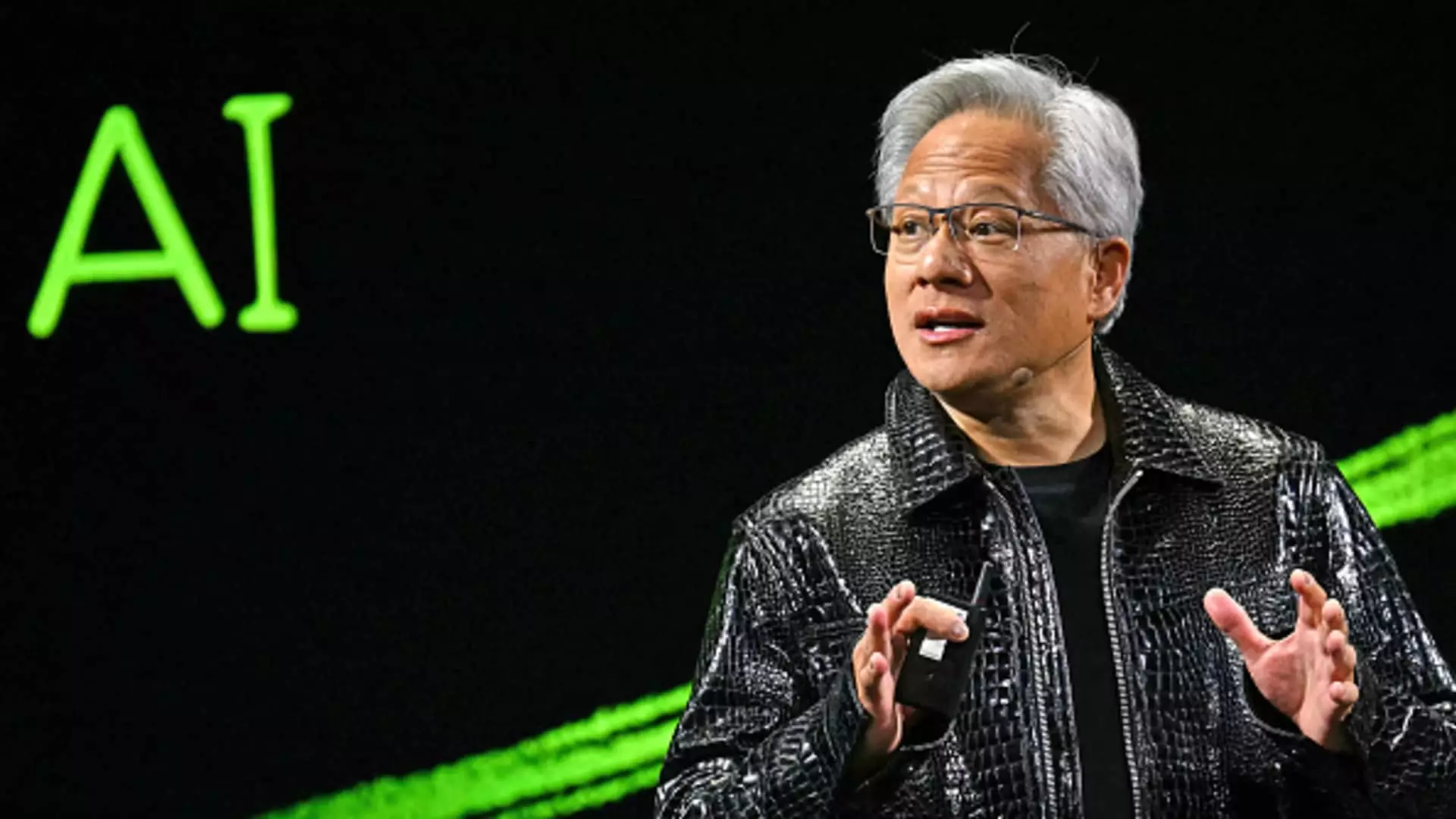Nvidia is set to unveil its fourth-quarter earnings report on Wednesday, a significant event for investors and market analysts alike. Current estimates from LSEG suggest an earnings per share (EPS) of $0.84, along with revenues projected to reach $38.04 billion. This earnings disclosure will serve as a capstone to a remarkable year for the semiconductor giant, one marked by unprecedented revenue growth and a soaring market presence. Analysts are forecasting an astonishing 72% rise in revenue for the quarter ending in January, contributing to a full fiscal year revenue that could surpass $130 billion—a staggering increase from previous levels.
At the heart of Nvidia’s meteoric rise is their robust data center graphics processing units (GPUs), which have become indispensable assets for the burgeoning field of artificial intelligence (AI). Technologies like OpenAI’s ChatGPT have underscored the necessity of high-performance hardware for developing sophisticated AI applications. In the last two years alone, Nvidia shares have appreciated more than 440%, momentarily positioning the company as the most valuable in the U.S., with its market capitalization briefly eclipsing $3 trillion. This growth, however, has sparked concerns among investors regarding sustainability and continued expansion in the shadow of a rapidly evolving technological landscape.
Despite Nvidia’s staggering achievements, the stock has encountered headwinds in recent months, with its trading price stagnating at levels last seen in October. Investors are increasingly questioning what the future holds for the company, particularly in terms of continued demand for its products. With hyperscale cloud providers—Nvidia’s main customer base—exhibiting signs of cautious spending following years of heavy capital outlays, the company’s next moves may be pivotal.
Adding to the complexity of the landscape is the emergence of DeepSeek’s R1, a Chinese AI model that has led many to reconsider traditional assumptions about the demand for Nvidia’s advanced chips. This situation could also lead to geopolitical ramifications, as U.S. regulations concerning tech exports to China tighten further. Nvidia already faces restrictions on exporting its most advanced AI hardware to the region, and any increase in regulatory measures could pose significant risks for the company’s revenue streams.
Another point of concern highlighted by investors is the rollout of Nvidia’s Blackwell chip line, particularly in light of reports suggesting that the distribution may be slower than anticipated. Issues related to heating and yield may hinder the deployment of these advanced GPUs. Recent estimates from analysts at Morgan Stanley suggest technology giants like Microsoft, Google, Oracle, and Amazon will account for a considerable share of Blackwell spending, with Microsoft anticipated to make up nearly 35% of this investment. However, apprehensions arose last week following reports that Microsoft had canceled data center leases, potentially indicating a slowdown in its AI infrastructure investments.
On the flip side, Microsoft has countered these claims, reiterating its commitment to an $80 billion investment in infrastructure by 2025. This assertion, coupled with positive narratives from other key clients, aims to alleviate investor fears. Companies like Alphabet, Meta, and Amazon are all targeting substantial capital expenditures this year, enhancing the cautious optimism surrounding Nvidia’s prospects.
As Nvidia prepares to release its latest earnings figures, investors will be keenly focused on several key indicators of the company’s health and prospects. A primary concern will be Nvidia’s ongoing relationship with cloud service providers, as any signs of weakening demand could significantly impact future growth. Additionally, guidance for fiscal 2026 will be closely monitored, especially concerning projections of growth over the previous year’s remarkable sales figures.
Overall, Nvidia stands at a pivotal juncture. While its history of exceptional growth and influence in the AI sector positions it favorably, questions about future scalability and customer commitments loom large. The forthcoming earnings report will not only provide insight into the company’s financial standing but will also potentially outline its strategic priorities moving forward. Investors and stakeholders alike await these developments with anticipation and trepidation, eager to glean insights that may dictate Nvidia’s trajectory in the coming years.

